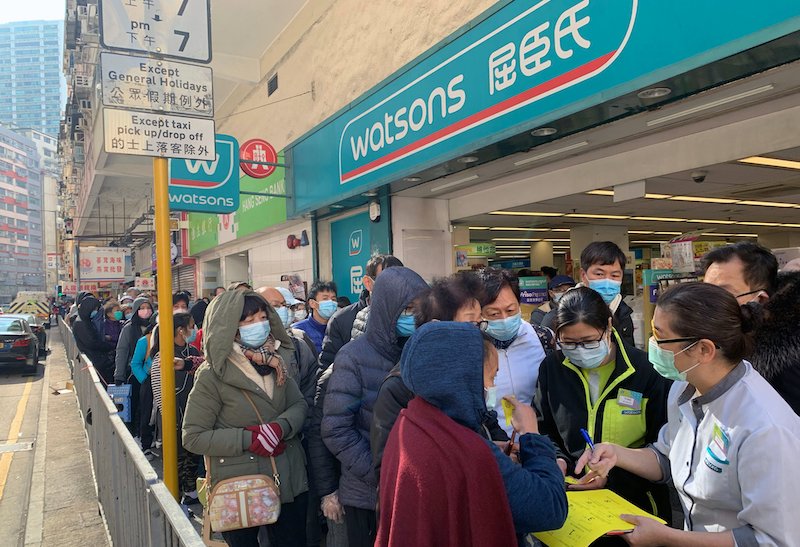Due to fears over the coronavirus outbreak, many people have begun to wear face masks to protect themselves.
Medical professionals, along with doctors from 13 DOCTOR, have stressed there is no need to wear face masks if you are healthy. Despite this, there are now shortages of face masks in some cities and many online sellers have sold out or increased prices.
How is the virus spread?
The coronavirus is transmitted through person-to-person contact and exposure to respiratory droplets from an infected person. When an infected person sneezes or coughs, the droplets they expel into the air carry the virus. These droplets can be spread if they touch the eyes and nose of another person or land on a surface which is then touched.
If someone were to come into contact with these droplets – by air or touching – they are at risk of becoming sick.
How could face masks work?
When used correctly, face masks can slow the spread of airborne viruses. The effectiveness of masks relies on the user wearing them correctly. Ensure the correct side is facing outward, the mask is snug over your nose, the loops are secured behind your ears and gaps around your jawline are closed off. Masks are only effective when used in combination with frequent hand cleaning, particularly if you touch the mask while in use.
The World Health Organisation (WHO) recommends healthy people only need to wear a mask if they are taking care of a person with a suspected coronavirus infection.
Using masks is not a guarantee that you will not get sick. While masks cover your mouth and nose, your eyes are exposed. While masks prevent you from touching much of your face, viruses can still be transmitted through eyes.
People who are sick with coronavirus should wear facemasks. Masks are able to prevent the spread of virus via droplets. However, wearing a face mask while sick with coronavirus does not negate the need to maintain a 14-day self-quarantine at home.
Do not touch the front of a used mask even while removing. Anyone using facemasks should dispose of each mask immediately after use and wash hands thoroughly.
Different kinds of face masks
There are two types of face masks: surgical masks and respirators.
Surgical masks are often used by doctors, dentists and nurses while treating patients. These are the most common masks seen during viral outbreaks. While they do protect from sprays, they are loose-fitting and relatively thin, so droplets can still break through. The masks do not provide a tight seal around the nose and mouth, and because of that, much of the air breathed by the user is unfiltered.
Respirators are far more effective, as they can filter out 95% of airborne particles, including viruses and bacteria. Respirators are most commonly used by construction workers and are heavy-duty and form fitted. These masks are less commonly used during outbreaks despite being more effective. Respirators are often uncomfortable and make breathing difficult, preventing use over long periods. It is not recommended that pregnant women use respirators.
What did we learn from SARS?
From the severe acute respiratory syndrome (SARS) epidemic we learned face masks played some role in slowing the spread of the virus. However, this change of pace was mostly because it prevented those who were already sick from passing the virus on to others.
How else can you prevent sickness?
There are more effective methods to preventing sickness. Maintain distance from people already sick, particularly those who are coughing or sneezing. Avoid touching your face. Wash your hands frequently and thoroughly for at least 20 seconds with soap and water.
If you have cold and flu-like symptoms and need to seek medical advice you can see and speak to a doctor on a video call or phone call by contacting 13 DOCTOR.
